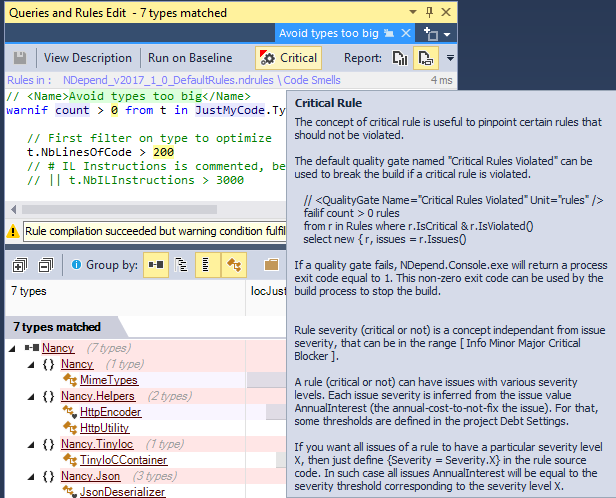

- #THE POWER OF TEN RULES FOR DEVELOPING SAFETY CRITICAL CODE SOFTWARE#
- #THE POWER OF TEN RULES FOR DEVELOPING SAFETY CRITICAL CODE CODE#
It is great these rules are available for software community. To quote Holzmann, to be effective, a set of rules has to be small, and must be clear enough that it can easily be understood and remembered. Holzmann, a guy who works at Jet Propulsion Laboratories, proposed ten rules for developing Safety Critical Code. NASA is involved in development of critical software.
#THE POWER OF TEN RULES FOR DEVELOPING SAFETY CRITICAL CODE CODE#
The Power of Ten – Rules for Developing Safety Critical Code However, I think quote below could helps someone of you to reflect about the beauty of code:Ī well-written program is its own heaven a poorly-written program is its own hell.

Maybe it cannot be explained at all, like some other Zen concepts. The concept of beauty of code is sure something that cannot be explained easily. But keep in your mind that also imagination, problem solving and abstraction skills are foundamentals too. Time, practice and dedication are needed. Image what happen if a trading systems crashes during the market day, or the ABS system in a school bus stops to do its job.ĭeep knowledge in software design, software paradigms, programming languages, tuning tools, performance measurement, debug and optimization are fundamental to write beautiful code. A crash could have devastating consequences for business or people’s life. Is a big mistake to underestimate this point, especially when code runs in critical contexts.

A software should be robust enough to protect itself and the system from crashes.

You could also say that it is ‘idiot-proof’. A memory leak in a program is an issue for all the other software that run in the system. The impact of an inefficient program is on overall system (software never runs alone). Computational and storage resources are precious and absolutely cannot be wasted. Or in another way, it performs efficiently and effectively. It expresses clearly developer’s intention: names are well chosen, code lines are well indented, and relationships and cooperations among components (functions, classes, libraries ecc. I consider a software beautiful when it has three characteristics: I am aware that use the word beautiful is pretty ambitious and could lead to an ambiguous interpretation in software world, so I’ll be more clear. In my opinion, the aim of a set of good rules can be summarized in a single sentence: make code beautiful. Every developer should do his best to follow coding style rules, but avoiding to be a style’s fanatic. Sometimes, they focus too much over naming and indentation style, and less over best practices or tools to adopt.Įvery changes made in the code should be done to make it better, efficient and effective. Curiously, there is little consensus on what a good coding standard is.ĭespite guidelines provide useful insights and tips for software design and programming, they could contain well over a hundred rules, also with questionable justification. I read several of these guidelines along my life. There are a lots of coding guidelines outside, proposed by several developer communities, sectors and IT companies. People involved in software projects agree on the use of coding guidelines. Thoughts on the beauty of the code and code rules Code guidelines


 0 kommentar(er)
0 kommentar(er)
